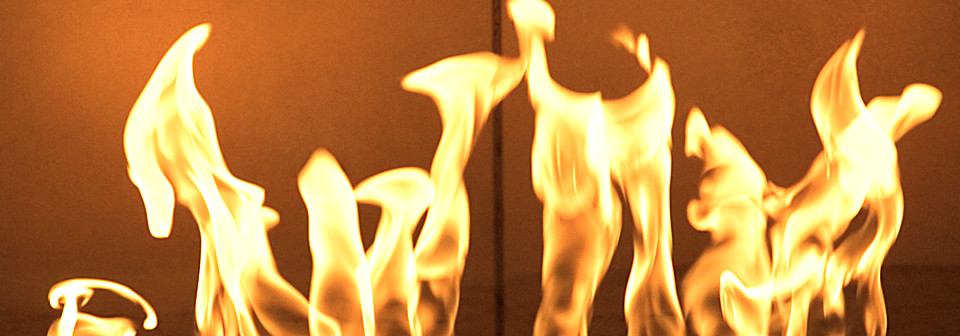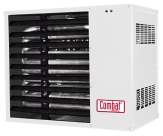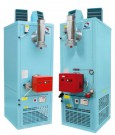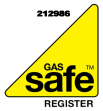Carbon Monoxide:The silent killer
‘Every year about 30 people die from carbon monoxide (CO) poisoning caused by gas appliances and flues which have not been properly installed or maintained’
(Extract from Health & Safety Executive leaflet - Gas Appliances Get Them Checked Keep them Safe).
‘Landlords who have breached the gas safety laws and put lives at risk have faced tough sentencing recently in the courts.’
(Extract from Gas Safe leaflet – Gas safety in rented accommodation, A guide for landlords and tenants
Carbon Monoxide (CO) is a chemical compound of carbon and oxygen. It is a colourless, odourless gas, and is poisonous to all warm-blooded animals and to many other forms of life.
When CO is inhaled, it combines more easily with haemoglobin in the blood, preventing absorption of oxygen and resulting in asphyxiation. CO is formed whenever carbon or substances containing carbon are burned with an insufficient air supply.
Methane (CH4) the main constituent of natural gas, is made up of one atom of carbon and four atoms of hydrogen. Propane (C3H4) is made up of three atoms of carbon and four atoms of hydrogen.
Provided that an appliance has been installed, commissioned and serviced correctly in accordance with manufacturer's instructions, and there is an adequate supply of combustion air, the products of combustion will consist of mainly carbon dioxide (CO2), water vapour (H2O) and nitrogen (N2). Nitrogen is present in the air supplied for combustion, but takes no part in the combustion process.
While the products of complete combustion are not toxic, they will rapidly cause asphyxia if allowed to build up in an enclosed space as they replace the breathable oxygen. This should be taken into account when investigating reports of "fumes", as products of complete combustion will not generally show up on a single cell analyser designed to detect CO only.
Is it safe to live with CO?
CO can be produced by a variety of carbon fuels, whether solid, liquid or gas, so unless we live in a remote part of the country, or live on a desert island, we will have difficulty avoiding it.
Walking down the pavement on our way to the local pub may expose us to CO at up to 6.4 ppm (parts per million) When driving a car, we may be exposed to 13.8 ppm inside, and in an underground car park, this exposure could increase to 44 ppm. If we worked in a garage workshop, we may be exposed to 49.2 ppm.
The Health & Safety Executive's safety guideline for exposure to atmospheric CO is 30 ppm on an average eight-hour period. The World Health Organisation has recommended an eight-hour average of 10 ppm.
In 1994, The Expert Panel on Air Quality Standards recommended that the UK should have an air quality standard for CO of 10 ppm in an eight-hour period.
Why CO is poisonous
Our blood has a component called haemoglobin, which normally absorbs oxygen in our lungs and carries it to the rest of the body. But naemoglobin absorbs CO 240 times more easily than it does oxygen. So when we inhale CO from the air, the haemoglobin attaches itself to this gas rather than to the oxygen, of which the body then becomes starved.
This can have disastrous results, including death, depending on the concentration of CO that is inhaled.
How is CO formed?
The process of combustion is a chemical reaction. If it is allowed to proceed to completion we get heat plus the products of combustion. If, however, that process is interrupted - ie, if the chemical constituents taking part are altered in any way-then we get incomplete combustion.
The most common cause of incomplete combustion which gas-fitting operatives in the field are likely to encounter is the lack of oxygen. This leads to the production of carbon monoxide.
A lack of oxygen may be caused by restricting the amount of air to the burner, by a shortage of oxygen in the air itself or by flame chilling.
Restricted air supply to the burner
The supply to the burner may be restricted, either by a blockage of the air supply to the appliance, or by a blockage of the flue outlet from the appliance. Both will have the same effect on the flow of air through and over the burner. Even when the necessary amount of air is able to enter the appliance, the required amount may not be able to pass through to the flames if there are deposits of dirt, lint, insects, rust or soot on top of the burner or inside the burner mixing tube.
Lack of oxygen in the air
A shortage of oxygen reaching the burner may be due to a lack of oxygen in the air. Normally, the air make-up is about 20 per cent oxygen and 80 per cent nitrogen. Therefore, without sufficient ventilation, as a gas appliance burns, it uses up the available oxygen in a room and produces the combustion products of carbon dioxide and water vapour. Because the proportion of oxygen in the room is reduced, a condition will soon be reached at which combustion is affected. This lack of oxygen is called "vitiation".
Air is vitiated (made impure) by reducing the proportion of oxygen compared to the other gases present in air. Therefore, adequate ventilation should be provided and maintained to prevent the air becoming vitiated.
If a flame is burning freely in air, combustion will continue satisfactorily until there is insufficient oxygen for the gas to burn completely. If that flame is burning inside an appliance, it will become longer in its attempt to reach out for more oxygen. This condition can cause the flame to touch the combustion chamber surface resulting in increasingly poor combustion and soot deposits due to an effect known as flame chilling.
Flame chilling
Flame chilling is the other main cause of incomplete combustion which is likely to be encountered in the field. When flames touch each other or a cold surface (that means any surface that is cooler than the flame temperature) they are said to "impinge".
Flame impingement will generally cause poor combustion, either by chilling or by one flame "robbing" another of oxygen.
Preventing CO build-up
CO in combustion is principally caused by a lack of oxygen. With any conventional flued appliance, we need to be aware of the need for adequate ventilation. The manufacturer of the appliance may have decided that the appliance will work correctly using adventitious air from around doors and windows.
There may be exceptional circumstances where, due to modern building techniques, adventitious ventilation is minimal. In these situations, consideration should be given to providing additional ventilation.
In a building of timber-frame construction, advice should be sought from the Institution of Gas Engineers' publication IGE/UP/7, under the heading Provision of Air, where it is recommended that purpose ventilation is provided for gas appliances in this type of property.
To avoid the production of CO, ensure adequate ventilation into the room where the appliance is located.
Other possible causes of incomplete combustion include:
•Problems within the appliance itself, such as poor maintenance.
•Incorrect commissioning of the appliance.
•Flame impingement, vitiation, and incorrect aeration of the burner.
•Thermal inversion and flame reversal.
All of these causes can be indicated by observation of the flame picture (see Figure 4 on page 34 of the Essential Gas Safety Manual).
The result of poor maintenance can cause filters to become blocked with lint and animal hairs in homes where there are pets, thus reducing the flow of combustion air to the primary air port, resulting in a gas/air mixture that is too rich with a resultant yellow variable flame.
This is likely to cause sooting and the production of CO. Commissioning requires that the gas rate and burner pressure be checked to ensure that they correspond with the manufacturer's stated data. This will ensure that the correct injectors are fitted.
Incorrect injectors may give incomplete combustion because they are not matched to the burner pressure, and aeration will give an incorrect flame picture which is either too rich or too lean. Don't fall into the trap of "factory set" and, therefore, no need to do anything. Always check to assure yourself that the appliance is actually equipped and set up as it was designed and constructed.
Flame impingement occurs where the flame comes into contact with, or is affected by, a cooler surface - particularly if the flame cone (where the unburned gases are located) comes into contact with the cooler surface. Incorrect combustion will take place and carbon and CO are formed. If the condition is not corrected, the carbon produced will build up and further exacerbate the problem.
Vitiation occurs where the flue gases are either not being discharged because of flue faults, or the products of combustion are being drawn back into the appliance with the combustion air. The result is that the combustion process is starved of oxygen and incomplete combustion takes place.
Thermal inversion or flame reversal are often the result of unusual movements of air within the building or builder's opening, causing a reversal of the normal flue condition, such that the flue admits air to the appliance from above or behind.
The opening, either permanently or temporarily, of windows at a higher level in the building can provide a direct route between the appliance and the open windows, providing an easier route for the products of combustion to exit the property (thermal inversion).
This situation can also cause flame reversal, the result being incomplete combustion.
One point to note is that if the flame picture displays a regular pink hue, there is the distinct possibility that a nebulizer (used by people with breathing difficulties) is being used in the property. This is no cause for alarm.
Finally, the chief source of problems involving incomplete combustion and CO are open flue and flueless gas appliances. These problems can be overcome by fitting a room-sealed appliance. It is always important to fit and commission appliances correctly, and have them regularly maintained by a CORGI-registered gas installer.
Advice to gas operatives dealing with gas escapes
Precautions must be taken to ensure the rescuer's own safety.
•Evacuate the property and any others that are likely to be affected.
•Turn off and make safe the appliance causing the problem, as well as any others that may start to produce CO as their air supply becomes contaminated (the simplest way is at the emergency control valve).
•It is important not to disturb the incident site.
•Ventilate all affected areas.
•Atmospheric checks with a suitable combustion analyser may be necessary before anyone is allowed access.
Never enter a contaminated area alone or without informing some other responsible person until all these precautions have been taken. CO has about the same density as air at the same temperature, but as it will be produced during combustion, it will be lighter than the surrounding air and circulated by convection around the room (appliance location). Areas can be severely contaminated with high levels of CO, even at considerable distances from the source. Gas suppliers have a legal duty to investigate reports of incidents where a death or injury notifiable under regulation 6 (1) of the Reporting of Injuries, Diseases and Dangerous Occurrences Regulations 1995 (RIDDOR) has occurred as a result of exposure to CO produced by a gas appliance. The supplier must take steps to identify both the circumstances that led to the escape of CO and the reasons why it built up a level that caused death or major injury.
Symptoms and effects of CO poisoning
In its Gas Appliances leaflet, the HSE details the early symptoms of CO poisoning as: tiredness, drowsiness, headache, pains in the chest and stomach pains
Any of these symptoms require medical attention, and serious cases of CO poisoning need extensive and urgent treatment.
However, the symptoms of CO poisoning can be confused with flu - severe headaches, nausea, dizziness and general lethargy - and to confuse matters further, severe CO poisoning makes the body turn a cherry-red colour, so in spite of asphyxiation, cyanosis (turning blue) does not occur. The victim's skin is pink or pale with bright red lips.
Carbon monoxide poisoning is insidious. It can affect the victim's mental ability before they are even aware that there is a problem. Any exertion increasing the victim's oxygen demand only exacerbates the problem, rapidly leading to collapse and eventually death.
Treatment Despite haemoglobin's great affinity with CO (relative to oxygen) it can be displaced by adequate oxygenation. .So its vital that the victim is removed immediately from the contaminated area and into the open air and given pure oxygen if available. Victims should be kept at rest, avoiding exertion. Medical advice should be sought as soon as possible.







